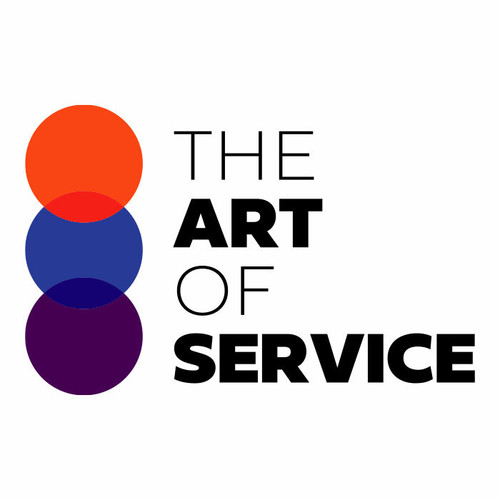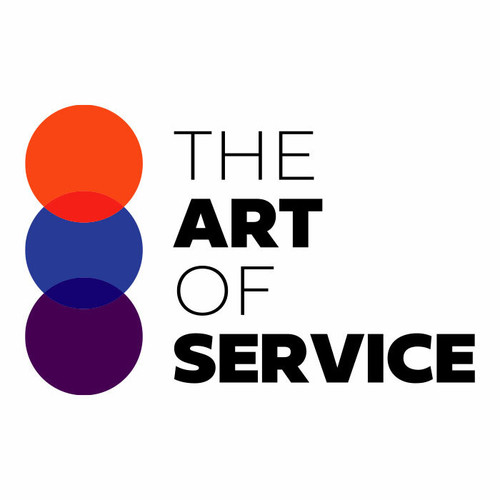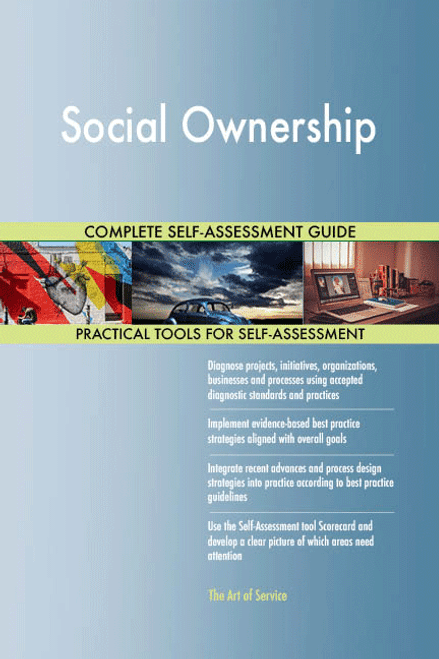- Keep track of all email IPS, domain name purchases, client softwares and tools to add/remove tools and take ownership of tool costs as clients manage and leave.
- Take ownership of product demonstrations and other client facing activities to help translate technical concepts into business terms.
- Take ownership of implementing new Project Management solutions to support the changing needs of Technology.
- Take ownership of a problem and stay with it through to resolution often involves coordinating the actions of people in other teams to achieve the desired result.
- Identify opportunities to innovate and enhance Service Delivery through ownership and Best Practices.
- Take initiative and ownership for delivering Complex Software system by working effectively with the teams and other stakeholders.
- Translate client needs to technical solutions based on a balance of architecture standards and plans, Total Cost of Ownership and feasibility.
- Functional ownership in Finance Technology, specifically leading the implementation of Financial and Regulatory reporting functions onto the Corporate Technology Data Lake and leveraging Platform Services / Finance as a Service to perform Data Management.
- Assure your team has ownership of the customer relationship, has authority to execute a Decision Making process on the impact of out of scope issues and to lead related commercial negotiations and contract amendments in conjunction with the Commercial Management.
- Oversee facilities related activities through all phases of the project life cycle to ensure quality with lowest total costs of ownership are delivered and integrated into sustained long term operations to meet thE Business and Technology Roadmap.
- Take primary ownership for written requirements specifications (Business and Functional), from initial creation, through Change Management and solution delivery.
- Start to finish ownership of control boards and other electronics from specification to design, prototype, and manufacturing.
- Provide input and ownership of technical and integration related processes as part of the Integrated Management scheduling (IMS) process.
- Ensure your organization defines objectives, frameworks, and metrics for the IT Strategic Planning process and establishes ownership and timelines.
- Ensure your enterprise identifies and implements Cybersecurity and acquisition reform initiatives to strengthen Information security compliance, reduce total ownership cost and/or schedule and meet Customer Requirements.
- Warrant that your planning applies approved project methods, standards and processes to reduce Total Cost of Ownership by applying Best Practices.
- Take ownership for departmental input into Product Line Simplification processes, Financial Analysis, and a strive to increase unit profitability.
- Be accountable for taking ownership of features and ensuring highest quality code is delivered to client specifications.
- Take ownership of escalated or complex issues or problems and follow through to resolution.
- Take ownership of problematic situations and use good judgment to find solutions while maintaining positive customer relations.
- Take ownership of what you and the team builds and coordinate your efforts across the teams to ensure proper completion.
- Be accountable for designing, simulating, prototyping, debugging and testing of Embedded Systems which combine electronics, mechanics, optics and software with end to end ownership of Product Design from concept to launch.
- Take ownership of assigned area by maintaining work area and equipment in a safe, clean, and orderly condition at all times.
- Be accountable for identifying Data Quality problems related to deficiencies in systems, applications, data stores and processes.
Save time, empower your teams and effectively upgrade your processes with access to this practical Role Ownership Toolkit and guide. Address common challenges with best-practice templates, step-by-step Work Plans and maturity diagnostics for any Role Ownership related project.
Download the Toolkit and in Three Steps you will be guided from idea to implementation results.
The Toolkit contains the following practical and powerful enablers with new and updated Role Ownership specific requirements:
STEP 1: Get your bearings
Start with...
- The latest quick edition of the Role Ownership Self Assessment book in PDF containing 49 requirements to perform a quickscan, get an overview and share with stakeholders.
Organized in a Data Driven improvement cycle RDMAICS (Recognize, Define, Measure, Analyze, Improve, Control and Sustain), check the…
- Example pre-filled Self-Assessment Excel Dashboard to get familiar with results generation
Then find your goals...
STEP 2: Set concrete goals, tasks, dates and numbers you can track
Featuring 999 new and updated case-based questions, organized into seven core areas of Process Design, this Self-Assessment will help you identify areas in which Role Ownership improvements can be made.
Examples; 10 of the 999 standard requirements:
- Are Roles And Responsibilities formally defined?
- How do you deal with Role Ownership risk?
- What is the right balance of time and resources between investigation, analysis, and discussion and dissemination?
- You may have created your quality measures at a time when you lacked resources, technology wasn't up to the required standard, or low Service Levels were the industry norm. Have those circumstances changed?
- What are the challenges?
- What happens when a new employee joins your organization?
- Are losses documented, analyzed, and remedial processes developed to prevent future losses?
- What can you control?
- What data is gathered?
- How do you identify the kinds of information that you will need?
Complete the self assessment, on your own or with a team in a workshop setting. Use the workbook together with the self assessment requirements spreadsheet:
- The workbook is the latest in-depth complete edition of the Role Ownership book in PDF containing 994 requirements, which criteria correspond to the criteria in...
Your Role Ownership self-assessment dashboard which gives you your dynamically prioritized projects-ready tool and shows your organization exactly what to do next:
- The Self-Assessment Excel Dashboard; with the Role Ownership Self-Assessment and Scorecard you will develop a clear picture of which Role Ownership areas need attention, which requirements you should focus on and who will be responsible for them:
- Shows your organization instant insight in areas for improvement: Auto generates reports, radar chart for maturity assessment, insights per process and participant and bespoke, ready to use, RACI Matrix
- Gives you a professional Dashboard to guide and perform a thorough Role Ownership Self-Assessment
- Is secure: Ensures offline Data Protection of your Self-Assessment results
- Dynamically prioritized projects-ready RACI Matrix shows your organization exactly what to do next:
STEP 3: Implement, Track, follow up and revise strategy
The outcomes of STEP 2, the self assessment, are the inputs for STEP 3; Start and manage Role Ownership projects with the 62 implementation resources:
- 62 step-by-step Role Ownership Project Management Form Templates covering over 1500 Role Ownership project requirements and success criteria:
Examples; 10 of the check box criteria:
- Cost Management Plan: Eac -estimate at completion, what is the total job expected to cost?
- Activity Cost Estimates: In which phase of the Acquisition Process cycle does source qualifications reside?
- Project Scope Statement: Will all Role Ownership project issues be unconditionally tracked through the Issue Resolution process?
- Closing Process Group: Did the Role Ownership Project Team have enough people to execute the Role Ownership project plan?
- Source Selection Criteria: What are the guidelines regarding award without considerations?
- Scope Management Plan: Are Corrective Actions taken when actual results are substantially different from detailed Role Ownership project plan (variances)?
- Initiating Process Group: During which stage of Risk planning are risks prioritized based on probability and impact?
- Cost Management Plan: Is your organization certified as a supplier, wholesaler, regular dealer, or manufacturer of corresponding products/supplies?
- Procurement Audit: Was a formal review of tenders received undertaken?
- Activity Cost Estimates: What procedures are put in place regarding bidding and cost comparisons, if any?
Step-by-step and complete Role Ownership Project Management Forms and Templates including check box criteria and templates.
1.0 Initiating Process Group:
- 1.1 Role Ownership project Charter
- 1.2 Stakeholder Register
- 1.3 Stakeholder Analysis Matrix
2.0 Planning Process Group:
- 2.1 Role Ownership Project Management Plan
- 2.2 Scope Management Plan
- 2.3 Requirements Management Plan
- 2.4 Requirements Documentation
- 2.5 Requirements Traceability Matrix
- 2.6 Role Ownership project Scope Statement
- 2.7 Assumption and Constraint Log
- 2.8 Work Breakdown Structure
- 2.9 WBS Dictionary
- 2.10 Schedule Management Plan
- 2.11 Activity List
- 2.12 Activity Attributes
- 2.13 Milestone List
- 2.14 Network Diagram
- 2.15 Activity Resource Requirements
- 2.16 Resource Breakdown Structure
- 2.17 Activity Duration Estimates
- 2.18 Duration Estimating Worksheet
- 2.19 Role Ownership project Schedule
- 2.20 Cost Management Plan
- 2.21 Activity Cost Estimates
- 2.22 Cost Estimating Worksheet
- 2.23 Cost Baseline
- 2.24 Quality Management Plan
- 2.25 Quality Metrics
- 2.26 Process Improvement Plan
- 2.27 Responsibility Assignment Matrix
- 2.28 Roles And Responsibilities
- 2.29 Human Resource Management Plan
- 2.30 Communications Management Plan
- 2.31 Risk Management Plan
- 2.32 Risk Register
- 2.33 Probability and Impact Assessment
- 2.34 Probability and Impact Matrix
- 2.35 Risk Data Sheet
- 2.36 Procurement Management Plan
- 2.37 Source Selection Criteria
- 2.38 Stakeholder Management Plan
- 2.39 Change Management Plan
3.0 Executing Process Group:
- 3.1 Team Member Status Report
- 3.2 Change Request
- 3.3 Change Log
- 3.4 Decision Log
- 3.5 Quality Audit
- 3.6 Team Directory
- 3.7 Team Operating Agreement
- 3.8 Team Performance Assessment
- 3.9 Team Member Performance Assessment
- 3.10 Issue Log
4.0 Monitoring and Controlling Process Group:
- 4.1 Role Ownership project Performance Report
- 4.2 Variance Analysis
- 4.3 Earned Value Status
- 4.4 Risk Audit
- 4.5 Contractor Status Report
- 4.6 Formal Acceptance
5.0 Closing Process Group:
- 5.1 Procurement Audit
- 5.2 Contract Close-Out
- 5.3 Role Ownership project or Phase Close-Out
- 5.4 Lessons Learned
Results
With this Three Step process you will have all the tools you need for any Role Ownership project with this in-depth Role Ownership Toolkit.
In using the Toolkit you will be better able to:
- Diagnose Role Ownership projects, initiatives, organizations, businesses and processes using accepted diagnostic standards and practices
- Implement evidence-based Best Practice strategies aligned with overall goals
- Integrate recent advances in Role Ownership and put Process Design strategies into practice according to Best Practice guidelines
Defining, designing, creating, and implementing a process to solve a business challenge or meet a business objective is the most valuable role; In EVERY company, organization and department.
Unless you are talking a one-time, single-use project within a business, there should be a process. Whether that process is managed and implemented by humans, AI, or a combination of the two, it needs to be designed by someone with a complex enough perspective to ask the right questions. Someone capable of asking the right questions and step back and say, 'What are we really trying to accomplish here? And is there a different way to look at it?'
This Toolkit empowers people to do just that - whether their title is entrepreneur, manager, consultant, (Vice-)President, CxO etc... - they are the people who rule the future. They are the person who asks the right questions to make Role Ownership investments work better.
This Role Ownership All-Inclusive Toolkit enables You to be that person.
Includes lifetime updates
Every self assessment comes with Lifetime Updates and Lifetime Free Updated Books. Lifetime Updates is an industry-first feature which allows you to receive verified self assessment updates, ensuring you always have the most accurate information at your fingertips.







